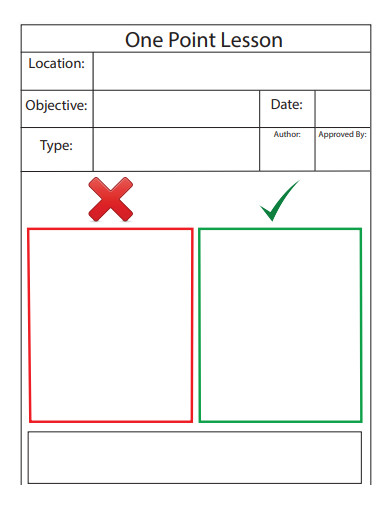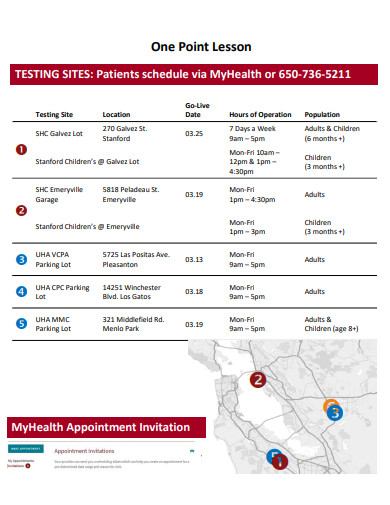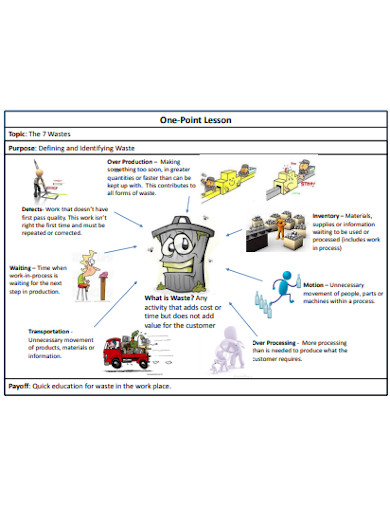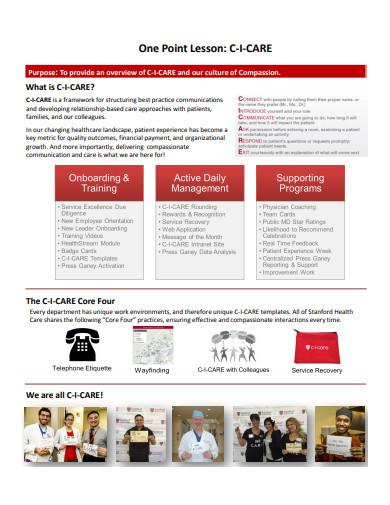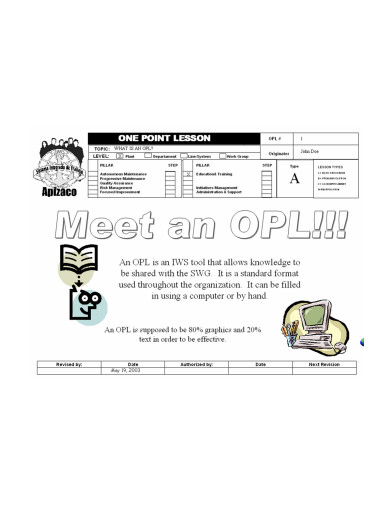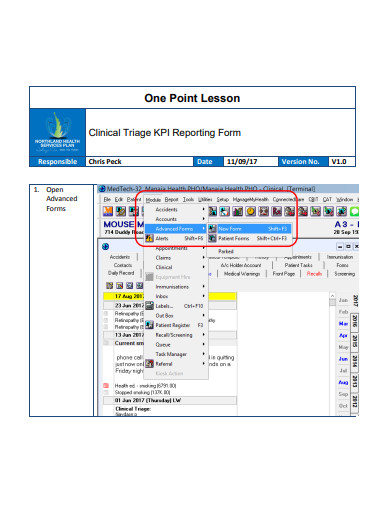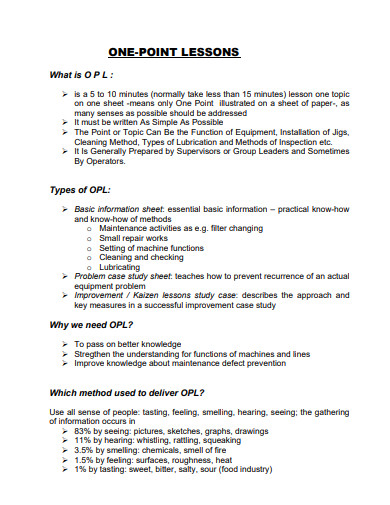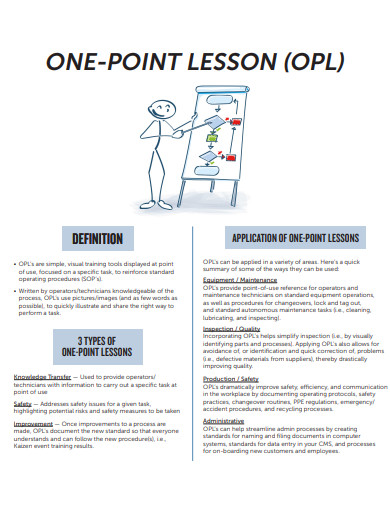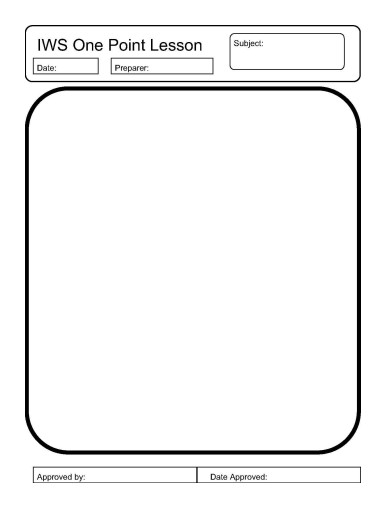More and more businesses are incorporating one-point lessons into their continuous development efforts. A one point lesson (OPL) is a work description that is simple, graphic, and frequently pointwise. This is a standard that specifies how a task should be completed. An OPL is a brief document that uses graphics, symbols, and minimal text. The chief factor is that it should be simple to learn and comprehend, as well as convenient to refer to while at work. Several businesses print their one-point lessons and post them near their workstations so that they are easily accessible. The use of graphic representations is really effective. You can also see more on Lesson Plan Objective.
Because one-point lessons are an integral aspect of a management system, they are subject to the same specifications. It is critical to understand that everyone uses the same and most recent version of a document, and that everyone who should view the document receives all changes. They are often the ones who conduct the labor that results in OPLs in many firms. They are the most knowledgeable about the intricacies and guarantee that the instructions are followed correctly, giving them ownership of the guidelines or standards. For example, an OPL for asset maintenance or guidelines on how to operate a new tool on the shop floor could be generated.
1. One Point Lesson
2. Sample One Point Lesson
How to Create One Point Lesson?
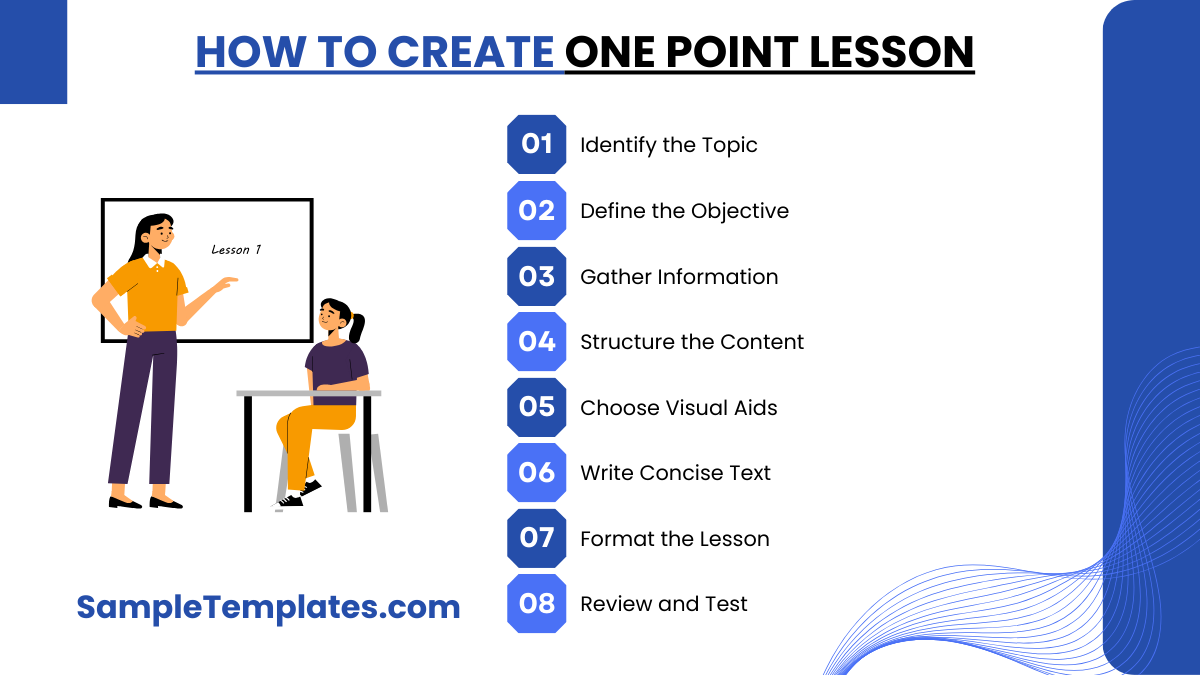
- Identify the Topic: Choose a single, specific topic or problem that you want to address. The focus should be narrow to keep the lesson clear and concise. You can also see more on Teacher Lesson Plan.
- Define the Objective: Clearly define what the learner should know or be able to do after going through the OPL. This objective should be measurable and directly related to the topic.
- Gather Information: Collect all necessary information, data, and resources that will support the lesson. This might include guidelines, best practices, safety precautions, or troubleshooting steps.
- Structure the Content: Break down the information into key points. An effective OPL typically includes an introduction, body (key points), and a conclusion or call to action.
- Choose Visual Aids: Since visual learning is a critical component of an OPL, select appropriate images, diagrams, or charts that enhance understanding of the topic. Visuals should be simple and directly related to the key points. You can also see more on Weekly Lesson Plan.
- Write Concise Text: Complement your visuals with concise, clear text. Each point should be easy to read and understand quickly. Use bullet points or numbered lists to organize the text effectively.
- Format the Lesson: Lay out the text and visuals in a logical, easy-to-follow format. Use headings and subheadings to guide the reader through the lesson. Ensure the overall design is not cluttered and that each element has enough space.
- Review and Test: Before finalizing, review the OPL for accuracy and clarity. Test it with a small group from your target audience to ensure it achieves its learning objective. Incorporate any feedback to improve the lesson.
3. Simple One Point Lesson
4. Basic One Point Lesson
5. Healthcare One Point Lesson
Use Cases for One Point Lessons
- Training New Employees: OPLs are excellent for onboarding new team members. They can quickly bring them up to speed on specific tasks, processes, or safety protocols, ensuring that new hires understand essential workplace practices right from the start.
- Improving Work Procedures: They can be used to highlight improvements or changes in work processes. An OPL can succinctly explain the revised steps in a procedure, helping to ensure all team members implement the changes correctly and consistently. You can also see more on Preschool Lesson Plan.
- Reinforcing Safety Guidelines: Safety is critical in any work environment. OPLs can provide clear, visual reminders of safety procedures, such as how to properly use equipment or what to do in case of an emergency, directly at the point of need.
- Quality Control: In environments where precision is crucial, such as manufacturing or lab work, OPLs can help maintain high quality standards. They can outline the key steps in quality checks or illustrate common errors to avoid during production.
- Troubleshooting Common Issues: OPLs are useful for explaining how to resolve frequent or typical problems that might occur with machinery or software. Having these lessons easily accessible can minimize downtime and empower employees to handle minor issues independently. You can also see more on High School Lesson Plan.
- Continuous Improvement Initiatives: For organizations focused on continuous improvement, OPLs can be used to share new best practices or innovations that have been developed internally. This helps spread valuable insights across the team or organization, fostering a culture of ongoing learning and improvement.
6. Education One Point Lesson
7. Formal One Point Lesson
Types of One-Point Lessons
- Safety OPLs: These focus on critical safety practices and protocols. They’re used to remind or teach workers about specific safety measures, such as how to properly wear personal protective equipment, handle hazardous materials, or respond to emergencies. Safety OPLs are vital in industries where safety is a primary concern, like manufacturing, construction, and healthcare. You can also see more on Teachers Lesson Planner.
- Quality Control OPLs: These lessons concentrate on quality assurance processes and standards. They outline the necessary steps to ensure products meet quality specifications, including how to perform inspections and handle non-conformities. Quality Control OPLs are essential in production environments and laboratories where maintaining high standards is crucial.
- Maintenance OPLs: These are designed to guide maintenance staff through the correct procedures for maintaining or repairing equipment. Maintenance OPLs include instructions for routine checks, troubleshooting common issues, and performing basic repairs. They help reduce equipment downtime and extend the life of machinery. You can also see more on Physical Education Lesson Plan.
- Operational OPLs: Focused on specific work tasks or processes, these lessons teach employees the best practices for completing tasks efficiently and effectively. Operational OPLs might cover topics like setting up a workstation, operating a machine, or executing a specific service. They are useful for training new employees or refining existing processes.
- Troubleshooting OPLs: These provide step-by-step guidance on diagnosing and resolving common problems that may occur in various systems or equipment. Troubleshooting OPLs are handy for enabling quicker fixes and minimizing productivity losses in high-tech environments, customer service operations, and technical support roles.
8. Professional One Point Lesson
9. One Point Lesson Format
10. One Point Lesson Example
Benefits of One Point Lesson
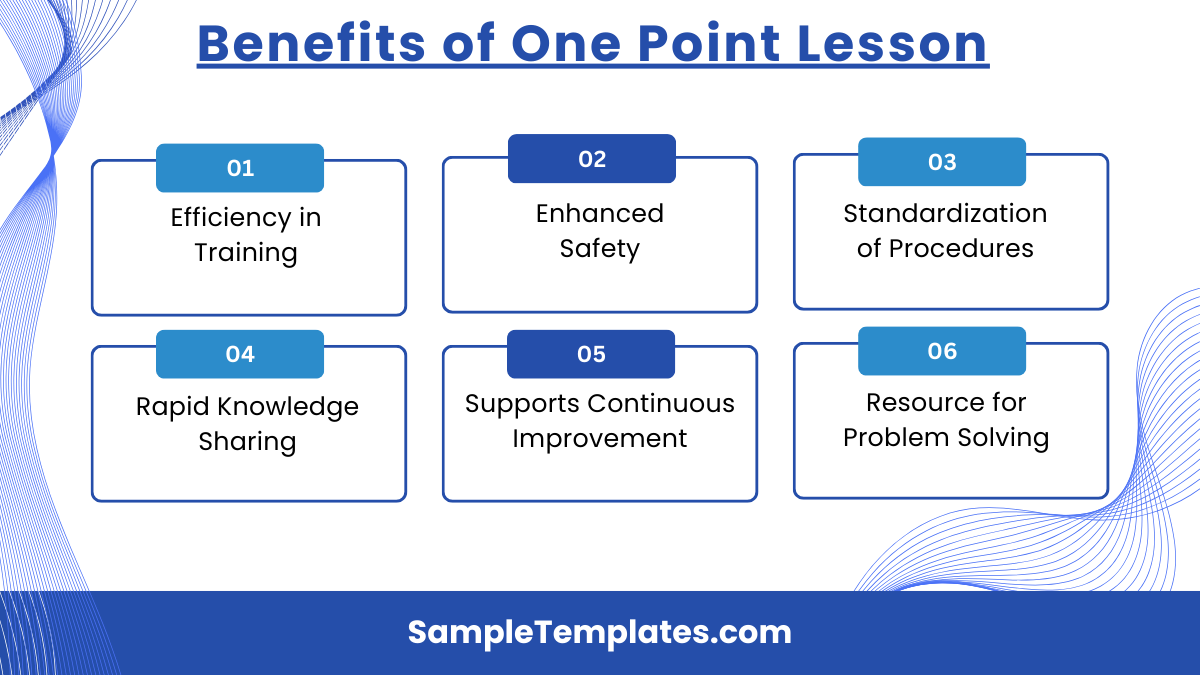
- Efficiency in Training: OPLs deliver concise information focused on a single learning objective, making them an efficient tool for training. Employees can quickly learn and apply new skills or knowledge without extensive time away from their workstations, reducing training time and speeding up the learning process.
- Standardization of Procedures: By using OPLs, organizations can standardize the way tasks and procedures are executed across different shifts and departments. This consistency ensures that all employees follow the same best practices, enhancing the overall quality and reliability of work. You can also see more on Daily Lesson Plan.
- Enhanced Safety: OPLs are particularly effective in reinforcing safety protocols. They provide clear, visual guidance on safe practices and emergency procedures, helping to reduce workplace accidents and ensure compliance with safety regulations.
- Rapid Knowledge Sharing: OPLs facilitate quick and effective knowledge sharing among team members. When a new best practice, tool, or problem-solving technique is discovered, it can be quickly documented and disseminated through an OPL, spreading valuable insights throughout the organization.
- Supports Continuous Improvement: OPLs are an excellent tool for continuous improvement initiatives. They make it easy to update and distribute new methods or improvements in procedures, keeping all employees aligned with the latest and most efficient practices. You can also see more on Health Lesson Plan.
- Resource for Problem Solving: Because they often address common issues and troubleshooting steps, OPLs serve as a handy resource for solving frequent problems. This autonomy allows employees to resolve issues without waiting for expert assistance, improving uptime and productivity.
11. Printable One Point Lesson
FAQs
Who can create a one-point lesson?
Everyone can grasp the OPL since it is plain, basic, and straightforward. One user creates the OPL, which he then passes along to his colleagues. The majority of the team members and operators should be able to access the OPLs. Teams should be encouraged to examine it before starting a new project. You can also see more on Language Lesson Plan.
What could be one of the characteristics of an OPL?
An OPL should not be longer than one page. Consider dividing it up into many OPLs or replacing it with a SOP if there is too much content. When an OPL is excessively long, it loses its effectiveness since no one will read it. You can also see more on Special Education Lesson Plan.
A one-point tutorial is a paper that explains how to complete workplace tasks. As is why they are a natural component of a management system and should be managed and controlled in the same way that versions, modifications, and changes are. It’s also crucial to ensure that those who do want to read it have access to the most recent version.
Related Posts
FREE 10+ Brand Guidelines Samples in PDF | MS Word
FREE 10+ Employee Offboarding Samples in PDF | MS Word
FREE 10+ Process Documentation Samples in PDF | MS Word
FREE 3+ Introduction About Myself Samples in PDF
FREE 10+ Process Map Samples in PDF | MS Word
FREE 10+ Decision Matrix Samples in MS Word | PDF | DOC
FREE 10+ Diversity and Inclusion Statement Samples [ University, Faculty, Value ]
FREE 10+ Bid Comparison Samples in PDF | MS Word
FREE 10+ HR Records Samples in PDF | MS Word
FREE 10+ Brand Brief Samples in PDF | MS Word
FREE 10+ Merger and Acquisition Template Samples in PDF | MS Word
FREE 10+ Cost Comparison Samples in PDF | MS Word
FREE 10+ Brand Pyramid Samples in PDF
FREE 10+ Workflow Mapping Samples in PDF | MS Word
FREE 10+ Requirements Gathering Samples in PDF | MS Word

